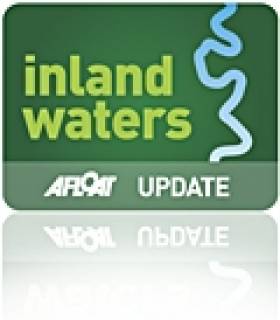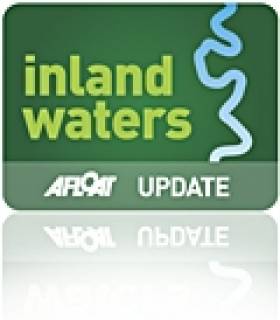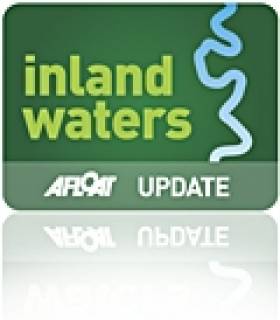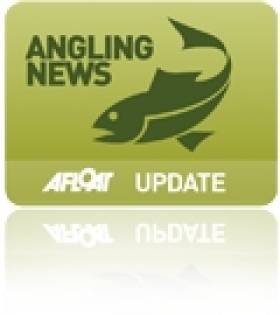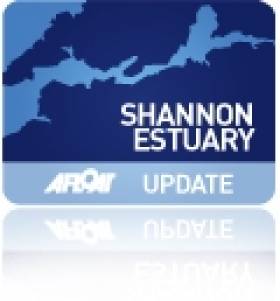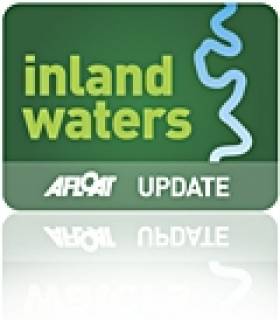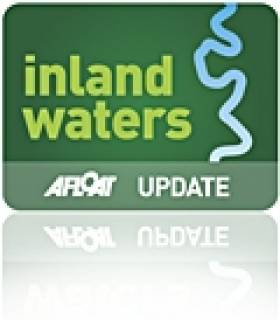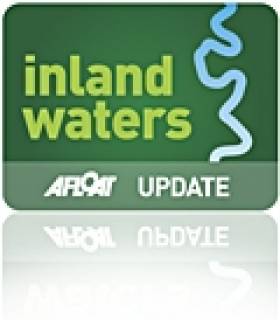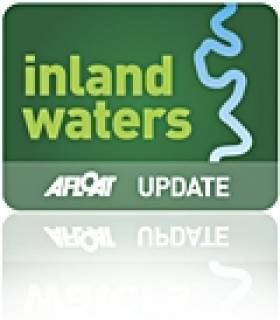Displaying items by tag: inland waterways
Navigation Restrictions in Enniskillen for Hallowe'en Night Fireworks
#INLAND WATERWAYS - Waterways Ireland is advising all masters and users of the Erne navigation that a fireworks display will take place at Castle Island in Enniskillen on Hallowe'en night around 8pm.
Masters of vessels are advised that in there interest of public safety, there will be no mooring permitted at the Waterways Ireland head office mooring nor at the Henry Street public jetties on the day of the event.
Navigation in the vicinity of Castle Island is also prohibited for the duration of the event.
Alternative mooring is available at the Forum and Regal Pass jetties with easy access to event vantage points. Instructions from safety vessels must be adhered to at all times.
Further information may be had from the Lough Erne manager/warden at the Waterways Ireland head office at +44 48 66 322 836.
Meanwhile, Waterways Ireland also reminds masters and users of the Lower Bann and Shannon waterways that the winter schedule for lock and bridge opening times will take effect from this coming Thursday 1 November, running till Sunday 31 March 2013.
Full details of opening times are available on PDF format for both the Lower Bann Navigation and the Shannon Navigation.
Green Light for New Cross-Border Bridge Near Carlingford Lough
#INLAND WATERWAYS - RTÉ News reports that An Bord Pleanála and NI Environment Minister Alex Attwood have granted planning permission for a new cross-border bridge spanning the River Newry near Carlingford Lough.
The single carriageway cable bridge will be 660 metres in length, with most of the funds required being sought from the EU`s €30 million fund for development in border regions. It is hoped to be completed and open to traffic by 2015.
The bridge will cross the river at Narrow Water, an area once notorious for an IRA ambush in 1979 that saw 18 British soldiers killed in a series of explosions.
It will also be able to open to allow tall ships and other vessels to access Victoria Lock and Albert Basin in nearby Newry.
Quoted in the Irish Independent is Pamela Arthurs, who helped lead the project on behalf of both Louth and Down county councils, who said the bridge was first mooted as far back as 1976.
"This has been a major project but it is not just about the fact that we will have a bridge, it is what it symbolises in how far we have come as a country," she said.
Minister Attwood also hailed the project as improving accessibility in a region of substantial natural beauty.
"It will be a great economic boost for the area, creating construction jobs in the short term, enhance tourism and promote greater community interaction across the border," he added.
The Irish Independent has more on the story HERE.
RTÉ One Screening 'A Grand Experience' on the Royal Canal Tomorrow Night
#MARITIME ON TV - Be sure to tune in to RTÉ One tomorrow night (Tuesday 16 October) for a special one-off TV documentary following three very different artists on a voyage of inspiration along the Grand Canal.
A Grand Experience, produced by Mixed Bag Media, joins writer Eugene O'Brien, photographer Veronica Nicholson and musician Wayne Brennan on board a historic 68m canal boat from Shannon Harbour to Edenderry in the Midlands.
Offaly County Council arts officer Sinead O'Reilly told the Offaly Express: “Our intention with commissioning this film, was to demonstrate how beautiful the canal in Offaly is and what an inspiration it can be."
The hour-long film is one of a number of projects from A Very Grand Canal, the scheme commissioned under the Per Cent for Art programme by Offaly County Council earlier this year that collects a variety of artistic responses to the Grand Canal. Some of these projects were exhibited during the recent Tall Ships Races Festival in Dublin.
A Grand Experience will be broadcast Tuesday 16 October at 10.15pm on RTÉ One, and will hopefully be available to view online later via the RTÉ Player.
Two in a Row for Wexford in 'Something Fishy' Schools Initiative
#INLAND WATERWAYS - Ballygarrett National School in Co Wexford fended off competition from 125 other primaries nationwide to win the 'Something Fishy' education programme for 2012.
The school claimed the award and a cheque for €500 for their project ‘Fishylympics’, a quirky blend of the Olympics, The X Factor and well known public figures,
and today receive their award and cheque for €500 from Minister Fergus O Dowd at Wexford Education Centre, Enniscorthy, Co. Wexford.
Presented on DVD, 'Fishylympics' is a dramatisation of the obstacles our native fish have to overcome to survive and win in the Fishylympics.
"I am convinced that wonderful learning experiences have been achieved and solid work produced on the basis of what I have seen, you have demonstrated imagination and an extensive level of understanding," said Minister Fergus O'Dowd, who presented the pupils with their prize at the Wexford Education Centre in Enniscorthy last Friday.
Four-time All-Ireland winner and Wexford camogie all-star Catherine O'Loughlin was also on hand to present each child with a goody bag.
She noted Wexford's two-in-a-row victory in the ‘Something Fishy’ competition – Donard National School took top place last year for their ecosystem-themed musical - and urged other schools in Wexford to take up the challenge set by Minister O'Dowd to go for a third.
Something Fishy is an educational resource originally designed and promoted by Inland Fisheries Ireland, in conjunction with the Blackrock Educational Centre, and is aimed at at fifth and sixth class pupils.
Originally based on the life cycle of salmon, it allows students to explore water, fish, fish stocks, angling, invasive species, conservation of rivers and lakes, and fish as part of the food chain.
Something Fishy now covers all fish species and invasive species. As well as class-based work, fisheries officers take students into the field to get hands-on experience of their work.
The competition has been run over the last seven years nationwide, and this year more than 120 schools took part, reaching over 5,000 individual students.
Northern Ireland Wild Salmon Stocks 'Around Dodo Levels'
#SALMON THREAT - Just three out of every 100 wild salmon returned to Northern Ireland's rivers last year - prompting concerns that the species has declined past the point of no return, as the Belfast Telegraph reports.
Following a recent meeting of the Stormont culture, arts and leisure committee where the issue was discussed, South Belfast MLA Michael McGimpsey shared his belief "that the public do not appreciate just how precarious the situation is.
"It is estimated that 1,000 to 1,500 salmon return to Northern Ireland each year to spawn. Of these, half are wild salmon and the other half locally hatched salmon.”
McGimpsey said it is "beyond question that there has been a serious collapse in local wild salmon numbers and this is a situation which has implications, not just for local anglers but for our tourist industry."
Claiming that NI's wild salmon stocks are now "around dodo levels", he demanded "totally drastic action in and around salmon" to ensure the species' future.
Earlier this year, as previously reported on Afloat.ie, Northern Ireland's Department of Culture, Arts and Leisure (DCAL) has called for a voluntary ban on offshore salmon fishing.
The move to stop issuing licences for commercial salmon nets that may "contravene European law" off Antrim's north coast was welcomed by river angling campaigners NoSalmonNets, who have been using social media to promote their cause.
Meanwhile, DCAL insists that any court action from salmon netters who may challenge the ban "should not prove an obstacle" to extending the salmon stock preserving measures. Proposals will be put to the minister by the end of this month with a view to enacting legislation next year.
The Belfast Telegraph has more on the story HERE.
Galway Councillors Put Shannon Flooding Decision On Hold
#SHANNON FLOODING - Galway Bay FM reports that Galway county councillors have postponed making any decision on an Oireachtas report into flooding in areas adjacent to the River Shannon.
The move was taken on the suggestion of Cllr Dermot Connolly in the wake of a joint Dáil and Seanad committee report that highlights eight proposals for dealing with flooding issues along the longest of Ireland's inland waterways.
Cllr Michael Connolly has suggested that Minister for the Environment Phil Hogan and Minister for the Gaeltacht Jimmy Deenihan should meet to discuss the report's findings from both a flooding and environmental stance.
Meanwhile, the Irish Independent reports that the Office of Public Works (OPW) has agreed to carry out tests at Meelick weir on the Shannon in Co Offaly after thousands of acres of farmland were flooded over the summer, ruining silage crops and summer grazing land.
Waterways Ireland has denied allegations that a failure to open sluices and lift boards at the weird contributed to the flooding.
New Inland Sponsorship Opportunities for Waterway and Waterside Activity
#inland – Waterways Ireland 2013 Sponsorship Programme for recreational waterway and waterside activity opens on 1 October 2012 for events taking place along the Lower Bann Navigation, the Erne System, the Shannon-Erne Waterway, the Shannon Navigation, the Barrow Navigation, the Grand Canal and the Royal Canal.
Taking place annually for the past seven years the Waterways Ireland Sponsorship Programme has supported angling, canoeing, rowing, sailing and power-sports; competitions, learning experiences, historical and educational activities.
Éanna Rowe, Head of Marketing and Communications with Waterways Ireland stated that "Communities, clubs and associations in towns and villages, along rural waterways and in waterside urban centres, have participated in small and large events. Huge numbers of people have been encouraged to experience something new about the waterways." Mr Rowe added " "the myriad of events supported by Waterways Ireland play a significant role from both an economic and social standpoint in underpinning and supporting the waterway communities and recreational activity along Ireland's Inland Waterways'.
Applications are open to anyone wishing to run recreational waterway and waterside events. For an application pack please contact Damien McWeeney by email at [email protected], by telephone at +353 71 96 50787. Terms and conditions do apply. The closing date the receipt of completed applications is 9 November 2012 at 3pm.
Waterways Ireland, the North/South Implementation Body is responsible for the management, maintenance, development and restoration of the inland navigable waterway systems throughout the island, principally for recreational purposes.
Winter Mooring Season Begins on River Shannon Navigation
#inland – Waterways Ireland facilitates owners to keep their vessels and boats at its public harbours over the winter period on the Shannon and Shannon-Erne Waterways. The upcoming winter mooring period begins on 1 Nov 2012 and will end on the 31 Mar 2013. The fee charged for this facility is €63.50 for the five month period.
Owners wishing to take advantage of this facility are advised to write to the Waterways Ireland Inspectorate, The Docks, Athlone, indicating their intention to take a winter mooring, give the specific location, boat registration number and enclose advance payment of €63.50 by cheque, bank draft or postal order made payable to Waterways Ireland. Credit card payments can also be made over the phone by contacting 353 (0)90 9741165. Payment must be received prior to 1 Nov 2012.
Boats owners that have not contacted the Inspectorate and made the advance payment must continue to observe the mooring time limits for public harbours i.e. the "5 Day Rule", which still applies and will be enforced during this period (Bye-law 17. Mooring and Use of Harbours).
Anyone with queries regarding winter mooring or the enforcement of the Bye-laws should contact the Inspector of Navigation +353 (0)906 494 232.
Minister Proposes Dublin-to-Galway Cycle Path Via Royal Canal
#ROYAL CANAL - The Royal Canal towpath is an "obvious candidate" for a stretch of the new cross-country cycle route from Dublin to Galway proposed by the Minister or Transport.
The Irish Times reports that Minister Leo Varadkar has instructed the National Transport Authority (NTA) to examine possible routes for the project, which would involve development of the present towpath along the waterway from Mullingar to Maynooth.
The NTA is already funding preparatory work with a view to upgrading the canal path as a premium quality Greenway Route for cyclists and pedestrians in the Fingal area from Ashtown to Westmanstown - and will now look at the feasibility of extending this project through Leixlip to Maynooth.
“A national off-road cycle trail would be a first for Ireland and would be a great tourism asset," said the minister, who added that the scheme has "the potential to bring in at least €15 million per annum, much of that going straight into local businesses along the route.”
Waterways Notice: Royal Canal Closure in Meath, Lower Bann Lock Restrictions
#INLAND WATERWAYS - Waterways Ireland has issued notice of a planned closure of the Royal Canal in Clonard, Co Meath over the winter months, as well as restrictions on the Lower Bann this coming Wednesday.
In Clonard, the stretch of the canal between Blackshade Bridge and Hill of Down will be closed from 1 October 2012 till 17 March 2013 to facilitate essential bank strengthening works.
Waterways Ireland wishes to thank all owners and masters of vessels using the Royal Canal for their co-operation in this matter.
Meanwhile, on the Lower Bann there will be an interruption to electricity supply in the Movanagher area in Co Derry this Wednesday 19 September.
All owners and masters are advised that there will be restricted access to Movanagher Lock and swing bridge on that date, and vessels of more than 26 feet (8 metres) will not be permitted to make passage.


























